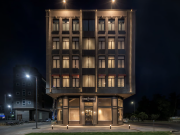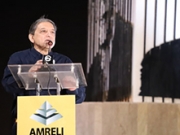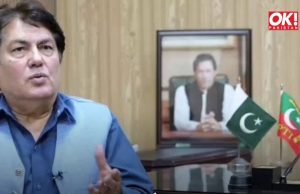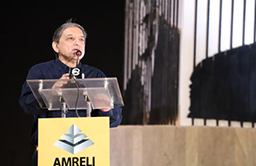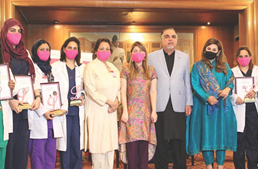According to Shehbaz, the PSDP’s budget of Rs700 billion is inadequate.
Prime Minister Presides Over Initial Review Meeting Budget of Rs14.6tr
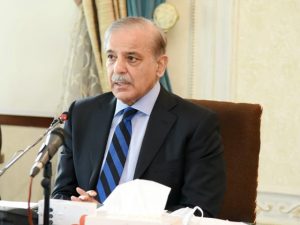
Earlier this week, the planning ministry raised concerns about the “small size of the envelope” proposed for the development budget for the next fiscal year, prompting Prime Minister Shehbaz Sharif to order the appropriate departments to seek further increases.
During the first review of the proposed Rs14.6 trillion budget for the fiscal year 2023-24, the prime minister issued directives to increase funding for the Public Sector Development Programme (PSDP).
The suggested size is more than double the initial budget for this year.
The prime minister reportedly also asked the finance ministry to reconsider the proposed compensation hike for federal government employees, according to people familiar with the matter.
Participants reportedly voiced concerns about the Federal Board of Revenue’s (FBR) inability to increase revenue collection by broadening the tax base and closing loopholes in the tax system.
Official literature distributed by the PM Office stated that the premier has instructed officials to take all feasible measures to aid the common man in the upcoming budget.
It quoted Prime Minister Shehbaz as saying during the meeting, “All resources should be utilised to reduce the financial difficulties of the poor and middle class [group].”
Despite a GDP estimate of Rs14.6 trillion, the projected PSDP for development spending in the upcoming fiscal year is only Rs700 billion.
The Federal Planning and Development Minister, Ahsan Iqbal, told The Express Tribune that “the amount of Rs700 billion is not enough to support the country’s economic growth,” given the current economic condition.
The economy of Pakistan is through a rough patch; forecasts range from a decrease of up to 3 percent to a nominal growth of roughly 0.5 percent in the preceding fiscal year.
On Wednesday (today), the Ministry of Planning is likely to approve a preliminary estimate of economic growth for fiscal year 2022-23.
Former finance minister Dr. Hafiz Pasha wrote in an English daily on Tuesday that the PBS is unlikely to fully reflect this in its initial estimates of the National Income Accounts for this year, and that the country’s previous projection of a negative GDP growth rate of 1% to 2% in 2022-23 will now need to be revised to a negative growth rate of 3% or more.
Minister of Planning Iqbal, however, stated that the prime minister had mandated a new PSDP allocation number be settled upon by both departments.
The planning ministry, he said, had requested Rs1.2 trillion for the following PSDP.
However, “the finance ministry has not yet agreed to it,” he said.
According to a recent study from the IMF, Pakistan’s PSDP has become “unaffordable.”
A technical assistance report published by the IMF during a March visit at Pakistan’s request stated, “The PSDP is unaffordable with currently approved projects likely to take a decade and a half to complete before accounting for cost increases.”
The international financial institution pointed out that the government increased spending on new projects by Rs2.3 trillion in the most recent budget despite severe economic constraints and a massive backlog of unfinished projects.
According to the research, PSDP approved projects will cost a total of Rs12 trillion, while only Rs727 billion were allocated for the entire programme in the previous fiscal year.
Since ongoing projects that do not get financing in 2022-23 are not included in the financial backlog, the technical mission report noted that it will likely take longer than stated to finish the approved projects.
For the upcoming fiscal year, the government also plans to allocate Rs90 billion for the programmes submitted by members of the National Assembly.
In order to fund the initiatives proposed by the lawmakers in the Pakistan Democratic Movement (PDM) alliance, the ruling alliance has decided to enhance the budget for the parliamentarians’ schemes for the current fiscal year from Rs68 billion to Rs111 billion.
With less funds available and a push to initiate more politically charged initiatives, the price tag on development programmes has been rising.
The Central Development Working Party (CDWP) met on Tuesday, as called for by the planning ministry, to approve the updated budgets for ongoing programmes.
The CDWP conference agenda highlighted three major projects: the Narowal Sports Complex, the Sehat Sahulat Card, and the Jamshoro power plant, all of which are experiencing significant cost increases for various reasons.
The initial estimate for the Narowal project cost of Rs2.3 billion has ballooned to an estimated Rs5.8 billion, an increase of 158%.
The increase was blamed by the planning ministry on the fact that the project had to be put on hold for five years due to investigations being launched by the Federal Investigation Agency (FIA) and the National Accountability Bureau (NAB).
Both of these anti-corruption agencies failed to uncover any misconduct, but they did help drive up the price.
Similarly, the Sehat Sahulat card project was presented to the CDWP for approval at a higher price tag of Rs51.4 billion, a 53% increase from 2016.
The programme started so that persons making less than $2 per day may get medical care at home.
The administration has projected a budget deficit (the difference between spending and revenue) for the next fiscal year of about 7.4% of GDP, which comes at a time when the risk of default is rising.
The potential deficit in the national budget might amount to Rs7.8 trillion.
After interest is factored in, the primary deficit for the federal government may be 3% of GDP.
Even so, the main budget for this fiscal year is still more than the 0.7% of GDP that was projected.
According to the sources, provincial financial surpluses might help swing the primary budget into a small surplus.
Estimates put the potential national deficit at 6.9% of GDP, or Rs7.3 trillion.
The Prime Minister’s Office insisted that the country’s economy was on the path to prosperity.
It was also noted that the budget deficit was declining over time.
While this is a decrease from the previous fiscal year’s 1.1% of GDP, it still represents a significant increase of Rs1.1 trillion.
According to the Prime Minister’s Office, the Prime Minister has ordered tangible efforts to be implemented to enhance income and widen the tax net.
According to the sources, some of the meeting attendees voiced concerns about the FBR’s incapacity to broaden the revenue base.
In addition, they mentioned that interest payment allocations could stay around Rs7.5 trillion, which is Rs3.5 trillion, or 87% more than this year’s authorised budget.
According to the rumours, the defence budget requested by the finance ministry was around Rs1.7 trillion.
The Defence Ministry, however, asked for a whopping Rs1.92 trillion.
The current projection for federal government gross receipts is Rs11.8 trillion, up from the first budget by 25%, or Rs2.3 trillion.
Sources estimate that after deducting the provinces’ fair share, the federal government will have a net revenue of Rs6.5 trillion.
The FBR expects to collect Rs9.2 trillion in taxes this year, an increase of 24%. However, when expressed as a percentage of GDP, this amount is just 8.7%, which is insufficient to both slow the growth of the national debt and cover current expenditures.

























